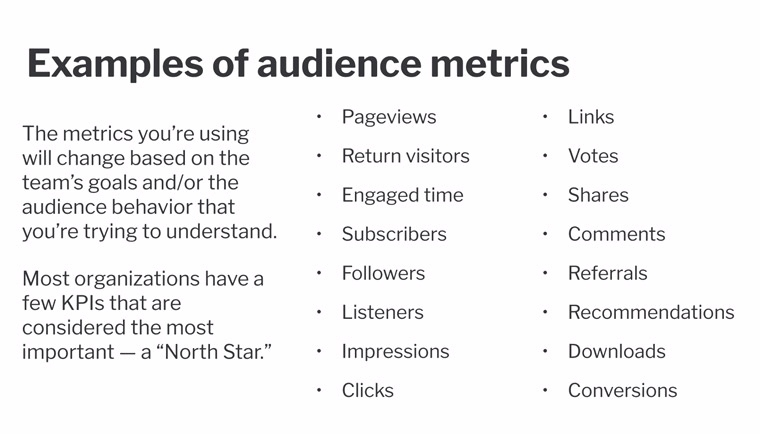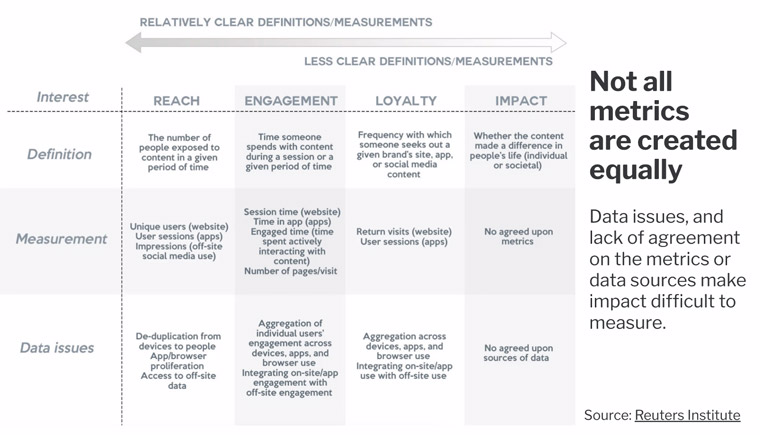Data-informed newsrooms don’t need to be scary for editorial teams
Smart Data Initiative Blog | 26 October 2022
Analytics is a crucial tool for newsrooms but can also seem intimidating. In Wednesday’s INMA Webinar, Hannah Wise, central region audience growth and retention editor for McClatchy, explained how newsrooms can learn to fearlessly embrace and leverage data.
“Analytics do not need to be scary,” Wise promised INMA members during her talk. “I think that so many journalists see numbers and … it feels uncomfortable. They just want to work on the words; they want to tell good stories.”

However, in her work with editors, Wise said she is able to show that analytics is just a tool “like any other form of documentation or research that you do.”
With analytics, newsrooms can better understand some of their own biases and learn to measure consumption and engagement. All departments of a news media company rely on analytics, but each will use different tools and different metrics.
Data in the newsroom
Wise explained that analytics and metrics are two different things. She called metrics the “what” and said analytics is the “so what.”
While metrics are what you measure to gauge performance, analytics are a “form of quantitative data collection that can offer insights into the frequency or the duration of audience actions.” That means looking at how users are reading, viewing, linking, clicking, sharing, commenting, or voting. Analytics humanise the metrics and provide the necessary information to make decisions that are right for audiences, she said.
“So we can set a hypothesis and measure and see how it comes out,” Wise explained. Newsrooms can see if the assumptions they’re making are consistent with the performance of a story and identify trends more quickly.

The human touch
But none of this, she emphasised, is possible without humans to interpret the data and think critically about the results.
“I never want to get to a place as in industry or a society that we’re just waiting for a spreadsheet to spit out a number,” Wise said. “Keeping humans inside is really important.”
She noted that Big Tech companies are an excellent example of what happens when algorithms are making decisions without human guidance: “As we can see on social media, we’ve had companies shaping our universe based off of algorithms. We’re getting to the point where we’re creating bigger silos and showing the worst of society.”
Human thinking can counterbalance the analytics and offer insight into what is valuable for readers and what the algorithms and analytics might be missing.
The map ahead
Before understanding what metric to use, newsrooms must have a goal in mind. There are many different metrics that can be used, and Wise recommended setting a SMART (specific, measurable, achievable, relevant, time-bound) goal before choosing what metrics and measurements are best suited for it. The selected metric will be based on the desired outcomes.
“It might be subscribers, followers, listeners, comments, referrals, or recommendations,” she said. “When I was at The New York Times, we talked a lot about comments. But if you’re talking about podcasts or audio, downloads might be a more appropriate measure for you.”

Even within the newsroom, different teams will have different goals and metrics: “If you’re the video team, you’re probably going to be interested in something different than the reporter or editor — or the audience teams that’s focused on social. So the same story might have three different key metrics. Having each team set a goal will inform which metrics each team uses.
Measuring impact
One of the questions newsrooms want answered is: “Am I making a difference?” While it is an important metric, it can be among the most difficult to measure, Wise said.
“It’s not something we can use a cookie on a site to measure,” she said. “There’s no clear, agreed-upon metrics for that, and it relies on the community.”

The metric of impact can only be gauged by reader response. And even then, not everyone may share how a story affected them, particularly if it’s a sensitive topic. Impact is a metric whose measurement will vary from one story to the next — and it remains an elusive but vital component.
“There will be tons of people who don’t want to [talk to the newspaper about it] and that is why impact can be very hard to measure,” Wise said. “I know [news organisations] have put some thought to this, but I don’t think we’ve agreed on any one thing [that works].”
Embracing data
As every aspect of the world becomes increasing shaped and driven by data and analysis, Wise cautioned against becoming a data-led newsroom. Instead, she said, lean into data-informed decisions.
“Be thinking critically about the trends that you’re seeing and understanding the forces that are shaping those audience behaviours,” she said. “You want to have people talking about what they’re seeing, looking for those potential pitfalls and for any sense of bias, and also bringing things that our analytics maybe are not measuring right now.”
If you’d like to subscribe to my bi-weekly newsletter, INMA members can do so here.






























